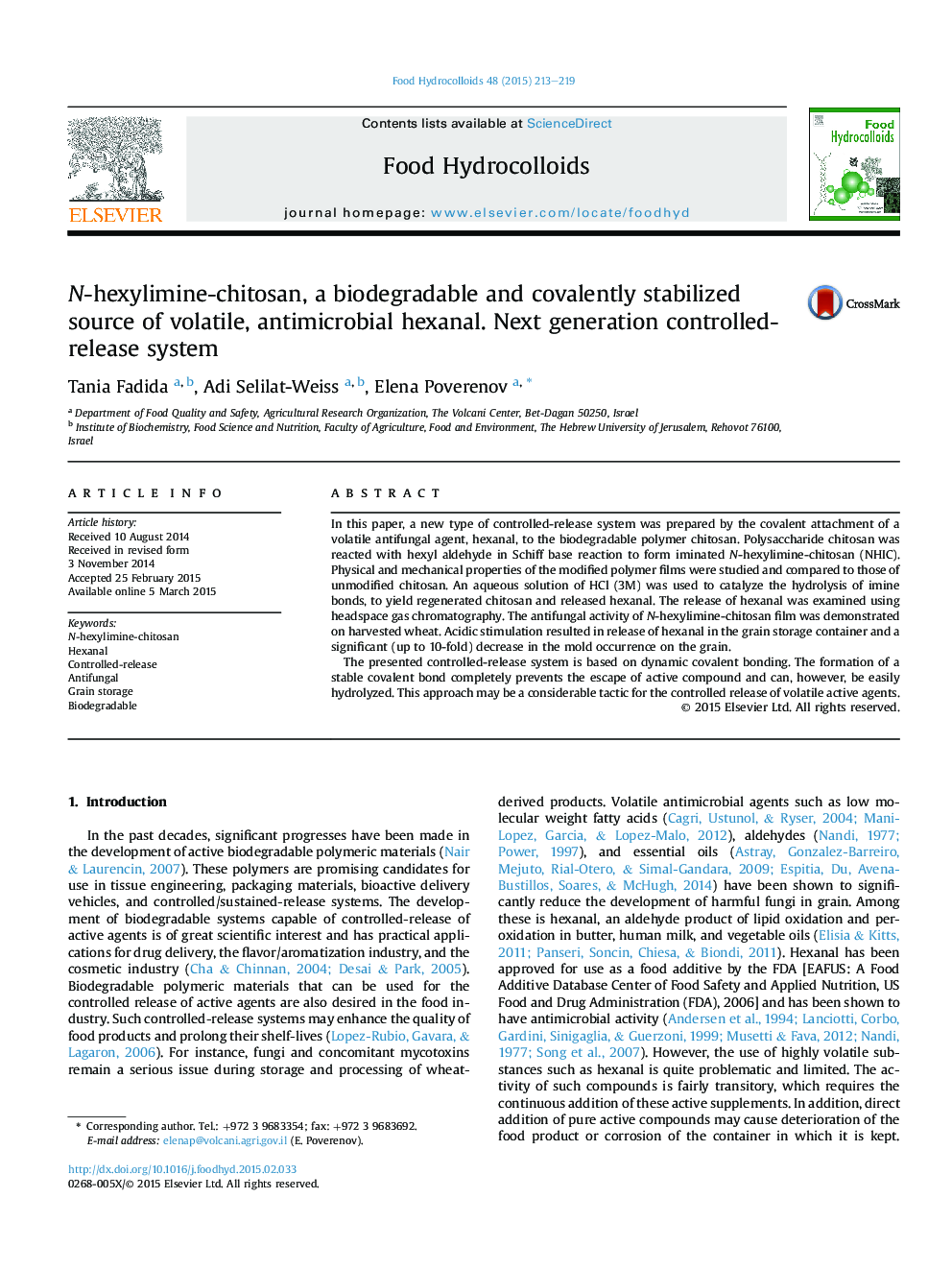| Article ID | Journal | Published Year | Pages | File Type |
|---|---|---|---|---|
| 604315 | Food Hydrocolloids | 2015 | 7 Pages |
•N-hexylimine chitosan (NHIC) a covalently stabilized system for the controlled release of antifungal hexanal was prepared.•Physical and mechanical properties of NHIC films were studied.•Acidic stimulation of NHIC resulted in instantaneous hexanal release.•Antifungal activity of activated NHIC films was demonstrated in wheat.
In this paper, a new type of controlled-release system was prepared by the covalent attachment of a volatile antifungal agent, hexanal, to the biodegradable polymer chitosan. Polysaccharide chitosan was reacted with hexyl aldehyde in Schiff base reaction to form iminated N-hexylimine-chitosan (NHIC). Physical and mechanical properties of the modified polymer films were studied and compared to those of unmodified chitosan. An aqueous solution of HCl (3M) was used to catalyze the hydrolysis of imine bonds, to yield regenerated chitosan and released hexanal. The release of hexanal was examined using headspace gas chromatography. The antifungal activity of N-hexylimine-chitosan film was demonstrated on harvested wheat. Acidic stimulation resulted in release of hexanal in the grain storage container and a significant (up to 10-fold) decrease in the mold occurrence on the grain.The presented controlled-release system is based on dynamic covalent bonding. The formation of a stable covalent bond completely prevents the escape of active compound and can, however, be easily hydrolyzed. This approach may be a considerable tactic for the controlled release of volatile active agents.
Graphical abstractFigure optionsDownload full-size imageDownload as PowerPoint slide
